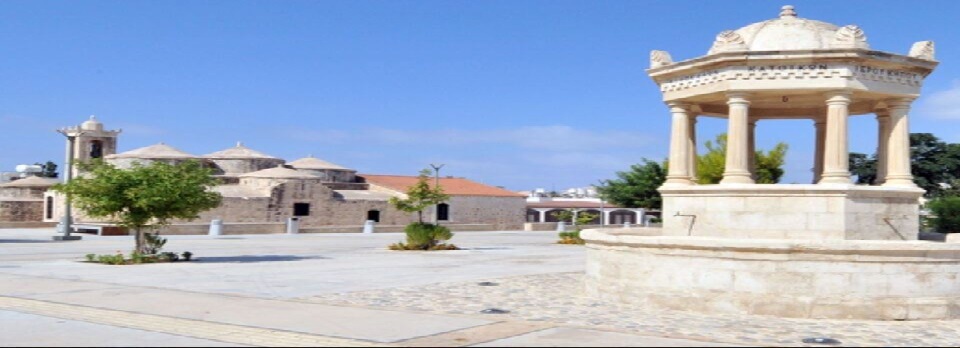Larnaca District is one of the six districts of Cyprus. Its main town is Larnaca. A small part of the district was occupied by the Turkish armyin 1974. The authorities in Turkish Republic of Northern Cyprus administer the Turkish-occupied parts of Larnaca District as part of Nicosia District.
Larnaca hosts both a port and the island's most important airport, Larnaca International Airport. The town also hosts the Hala Sultan Tekkemosque which is sometimes referred to as the third holiest site in Islam by some orientalists. However, this is not part of orthodox Muslim belief.
Larnaca, is the third largest city on the southern coast of Cyprus after Nicosia and Limassol. It has a population of 72,000 (2010) and is the island's second largest commercial port and an important tourist resort. The island's largest airport, Larnaca International Airport is located on the outskirts of the city.
To the north of the city lies the island's former oil refinery, which was reduced to a storage facility after the refinery itself was sold in 2008. To the south is the Larnaca International Airport. The city of Larnaka is well-known for its picturesque seafront which includes rows of palm trees (oi finikoudes, in the Cypriot dialect). LarnacaHistory of Larnaca Marina is one of the four official entry points, by sea, to Cyprus.
History of Larnaca.
Larnaca was founded by Greeks (Mycenaean-Achaeans) in the 14th century B.C. and was known as Kition, or (in Latin) Citium. The biblical name Kittim, though derived from Citium, was in fact used quite generally for Cyprus as a whole, and occasionally by the Jews for the Greeks and Romans. Larnaca is colloquially known as "Skala" meaning "ladder" or "landing stage", referring to the town's status in history as an important port.
Like most Cypriote cities, Kition belonged to the Persian or Achaemenid Empire. In 450 BC, the Athenian general Cimon, died at sea defending the city of Citium in a major battle with the Persians. On his deathbed, he urged his officers to conceal his death from both their allies and the Persians. The quote "Και Νεκρός Ενίκα" ("Even in death he was victorious") refers to Kimon. A statue of "Kimon the Athenian" stands proudly on the sea front promenade of modern Larnaca.
Like other cities of Cyprus, it has suffered repeatedly from earthquakes, and in medieval times when its harbour silted up (a sign that the island was deforested and overgrazed) the population moved to Larnaca, on the open seafront farther south. The harbour and citadel have now disappeared. Traces remain of the circuit wall, and of a sanctuary with copious terra-cotta offerings; the large cemetery has yielded constant loot from illicit excavations for more than a century.
Dig practically anywhere in the area from the tennis club past Chrysopolittissa church and you will find evidence of prior civilizations. Much of the yield near the surface is Roman and Venetian. Visit the museum by the Terra Santa Convent to see not only many exhibits but also the dig in their backyard along with Ali Baba's storage jars.
The fort on Larnaca seafront has recently been opened up for better viewing by the removal of the Megalos Pefkos (the Big Tree) and a few other illegal restaurants set up on the sea front by refugees after the 1974 invasion.
Book Online and save 60% Discount

